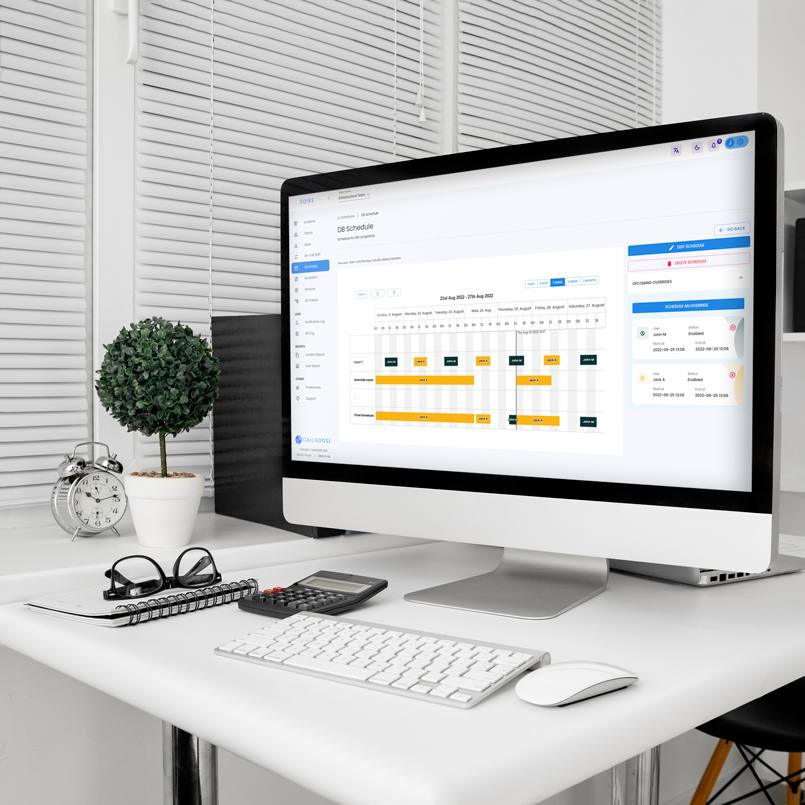Getting Started
Special
SINGLE SIGN-ON
Teams
Users
Escalation Policies
Service
Incident
Request
On-Call Shift
Schedules
Schedule Override
Logs
API
Webhook
Apps Integration
Reports
Preference
Profile
Automation
Self-Service Portal
FAQ
API - Incident
This guide helps you use the Incident API endpoints effectively.
Prerequisites
1. Find the Base URL
You can locate the base URL in Dashboard → API Token tab. Go to here for more details.
2. Construct the Final Endpoint
The Final Endpoint = Base URL + API endpoint.
Example:
The Base URL is: https://sqibs.callgoose.com/sqibs-api
Api endpoint is: /v1/process
The Final Endpoint will be: https://sqibs.callgoose.com/sqibs-api/v1/process
3. Authentication Token
Use a valid API token. Go to here for more details.
You need to include the API token with every API request by using as a Bearer Token in headers or as a URL request parameter.
a. Bearer Token
If the caller support header then you can use the API Token as a Bearer token.
Use the Header named Authorization and use Bearer <API_TOKEN> as the value.
In the following examples we are using this method.
b. URL Parameter
If the caller doesn’t support header customization, then we can use API Token as a value of URL parameter named token.
Example: https://sqibs.callgoose.com/sqibs-api/v1/process?token=xxxx
Create Incident
Endpoint
/v1/process
This API endpoint allows you to create Incident.
Payload
The API expects the payload to be in JSON format. Ensure that you are using the correct payload structure that used to create the Api Filter. If the filter validation fails, the incident will not be created.
Response
Based on the payload content and API token, we will process the payload with Api Filter you created earlier.
The response data you receive will be:
{
"id": "api-id",
"resolved": { // incident resolved detailed object
"duplicate": true/false, // true if the request was a duplicate within a specific time
"resolved": true/false // true if the resolved filter is successful
},
"triggered": { // incident triggered detailed object
"duplicate": true/false, // true if the request was a duplicate within a specific time
"created": true/false // true if a new incident was created
}
}
The response code you receive will be:
✅ 201 - Successfully processed the API request and created Incident(s) and resolved if applicable.
☰ 202 - Successfully processed the API request but there is no valid filter available to create/resolve Incident.
⿻ 208 - Duplicate API request. We have already got and processed a similar one earlier within a specific time limit.
🚫 401 - Unauthorized request. API Token is not valid. Make sure you are using a Incident token and not Request token.
❗ 500 - Server encountered a temporary error and could not complete the request at that moment. Please try again.
Usage Examples
Find the preferred language of your choice from the examples and use the code to test and implement.
If your language is not listed, you can easily create your own version by converting the cURL example.
cURL
curl --location --request POST 'https://************' \
--header 'Authorization: Bearer <api_token>' \
--header 'Content-Type: application/json' \
--data-raw '{
"title": "This is title",
"content": "This is content"
}'
PYTHON
import requests
import json
url = "https://************"
payload = {
"title": "This is title",
"content": "This is content"
}
headers = {
"Authorization": "Bearer <api_token>",
"Content-Type": "application/json"
}
response = requests.post(url, headers=headers, data=json.dumps(payload))
print("Status Code:", response.status_code)
print("Response:", response.json())
JAVA
private void sendApiCall() throws IOException {
String POST_DATA_IN_STRING = "{" +
" \"title\": \"This is title\"," +
" \"content\": \"This is content\""+
" }";
URL obj = new URL("https://*********");
HttpURLConnection postConnection = (HttpURLConnection) obj.openConnection();
postConnection.setConnectTimeout(5000);
postConnection.setRequestMethod("POST");
postConnection.setRequestProperty("Content-Type", "application/json");
postConnection.setRequestProperty("Authorization", "Bearer <api_token>");
postConnection.setDoOutput(true);
OutputStream os = postConnection.getOutputStream();
os.write(POST_DATA_IN_STRING.getBytes(StandardCharsets.UTF_8));
os.flush();
os.close();
String response = postConnection.getResponseMessage();
System.out.println("Response: "+ response);
}
JAVASCRIPT
var payload = JSON.stringify({
"title" : "This is title",
"content" : "This is content"
});
$.ajax({
type: 'POST',
url: 'https://*********',
dataType: "json",
contentType: "application/json; charset=utf-8",
data: JSON.stringify({ title: 'This is title', content: 'This is content' }),
headers:{
'Authorization': 'Bearer <api_token>',
'Content-Type': 'application/json'
},
success: function(response) {
console.log(response)
},
error: function(error){
console.log(error)
}
});
NODE JS
const axios = require('axios');
const data = JSON.stringify({
"title": "This is title",
"content": "This is content"
});
const config = {
method: 'post',
url: 'https://*********',
headers:{
'Authorization': 'Bearer <api_token>',
'Content-Type': 'application/json'
},
data: data
};
axios(config)
.then(response => {
console.log(JSON.stringify(response.data));
})
.catch(error => {
console.log(error);
});
• Replace the https://************ with the Final API endpoint.
• Replace the Bearer <api_token> with your API Token.

